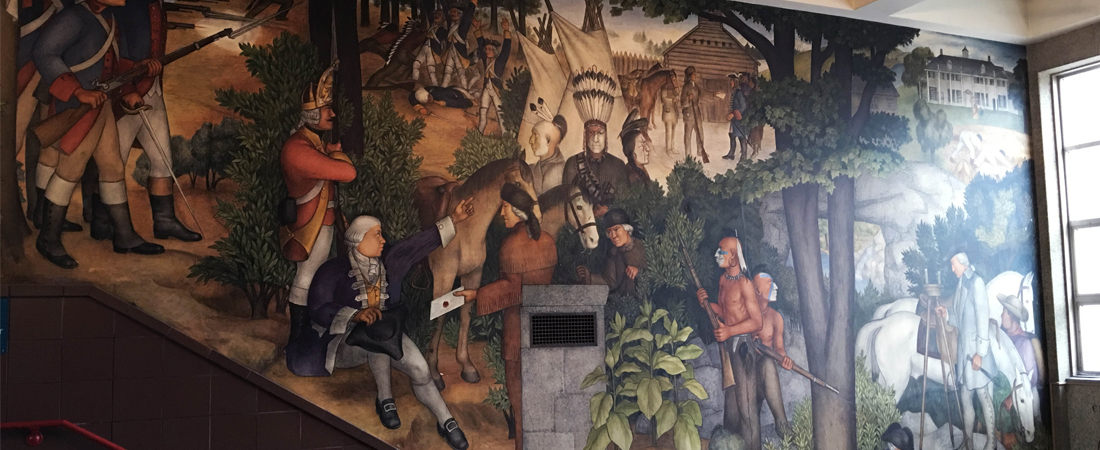This article original appeared in Censorship News Issue 131.
Within this past year, our school, George Washington High School, has been subject to national media attention because of a controversy that dates back to 1968. This controversy surrounds a mural at the entrance of our school, appropriately entitled “Life of Washington”, by muralist Victor Arnautoff. It depicts Washington’s life in four distinct parts. The controversy comes when you take a closer look, where you can clearly see slaves working in cotton fields, packing wares into large burlap sacks, and being both overlooked and ordered around by Washington. On another wall of the mural you can see Native Americans being attacked by pioneers and vice versa. But, perhaps the most troubling and controversial part of this mural is the depiction of a Native American man lying dead on the ground. Taken out of context, and even in it, it’s a stark and brutal image. For decades, this mural has been subject to criticism, outrage, protests, and most recently, an emotionally-charged decision as to whether or not it will be permanently painted over and removed from the halls.
We think that by removing these murals, the school board is setting a very dangerous precedent for the removal of art that may seem controversial or offensive. This is a form of censorship that may appear harmless, but its implications may be bigger than we think. In this debate, people seem to say that those who want the mural destroyed are “too sensitive,” and those who want to keep the mural in place are supporting racism. However, this controversy is not black and white.
Throughout history, Washington has been placed on a pedestal by a majority of America as the “Father of His Country,” an unquestionably positive figure. Victor Arnautoff tried to portray George Washington’s life with authenticity, which is probably what Arnautoff wanted students to take from the mural. The real question that we should be asking is how to improve the conversations surrounding Washington and other historical figures like him. Will removing the mural help this conversation or end it? We feel that we should keep the murals, and let them serve as a reminder that America’s founding was not as untroubled as some may believe, and as many history books suggest.
We want the murals to be kept, and taken as learning opportunities. The murals can create significant experiential education for students to examine the too-often-ignored Native American genocide and African American slavery that helped build this country into what it is. These historical truths are not integrated enough into our school curriculum, even though we have these murals surrounding us every day.
There could be a required assembly—every year, for all students—where students can learn about the realities the murals depict. There should be some kind of visible dedication or message that clearly explains the context in which these murals were painted and why they are still so important today. We could have guest speakers from historically-oppressed communities educate students on these under-taught events in history and how they still affect our lives today. Additionally, we could integrate the murals into our US History curriculum. We must acknowledge that the events depicted in this mural are a part of American history and talk about George Washington, in truthful, complicated, non-Eurocentric ways.
We need to find a compromise, where all parties involved can be truly heard. There will be people who are unsatisfied no matter what becomes of the murals. However, there is a possibility of finding a middle ground.
By Lía Sánchez, Rowan Francis Taylor and Dava Munyon, George Washington High School students


